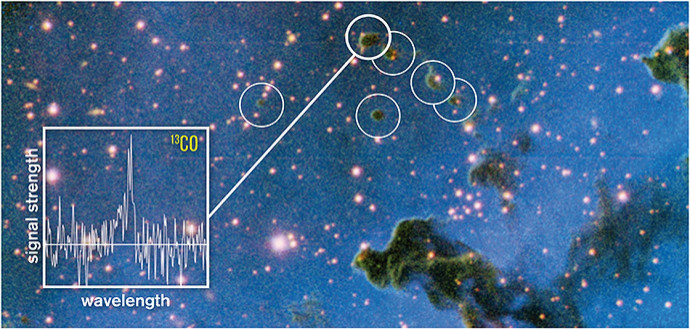Born Free: Free-Floating Planets May Form On Their Own, Don’t Need A Parent Star To Orbit

Free-floating planets roaming the universe were believed to have been kicked out from their orbit around a parent star but new research is questioning that theory. It turns out these planets may be born free as astronomers have discovered dense dust clouds where free-floating planets can form independent of any existing system.
Astronomers pointed their telescopes at the Rosette Nebula, Caldwell 49, located in the constellation Monoceros, approximately 4,600 light-years from Earth. Within the Rosette Nebula, the researchers discovered hundreds of little gas clouds that are incredibly dense with plenty of planet-forming material. The researchers made radio observations using the Onsala Space Observatory in Sweden and light observations using the APEX telescope and the New Technology Telescope at La Silla Observatory, both located in Chile.
The researchers are calling these tiny gas clouds “globulettes” and may explain how some of the approximately 200 billion free-floating planets came to be. The researchers have previously observed these globulettes and determined they were of planetary mass but the new observations determined these clouds have a dense core, which could lead to a new planet forming outside of an established system.
Llead researcher Gösta Gahm, from the Stockholm University, said in a statement, “They are very small, each with diameter less than 50 times the distance between the Sun and Neptune. Previously we were able to estimate that most of them are of planetary mass, less than 13 times Jupiter’s mass.” The researchers also measured the density of the globulettes and the speed at which they were traveling, relative to the surrounding environment. The globulettes are traveling at a fast speed, approximately 80,000 kilometers per hour, approximately 49,710 miles per hour.
The new globulette observations determined some of these clouds had extremely dense cores which could lead to the formation of a new planet. Carina Persson, from the Chalmers University of Technology in Gothenburg, Sweden, explains these clouds may collapse onto themselves, forming planets or brown dwarfs, stars that have failed to ignite.
While these planets are born free, the globulettes may have once been part of a larger gas pillar, created and later ejected from the center of the Rosette Nebula by hot young stars, explaining why the clouds are traveling at such a fast speed. Team member Minja Mäkelä, from the University of Helsinki, says “We think that these small, round clouds have broken off from tall, dusty pillars of gas which were sculpted by the intense radiation from young stars. They have been accelerated out from the center of the nebula thanks to pressure from radiation from the hot stars in its center.”
These types of globulettes can be found in each nebula and throughout the universe and may be the origin of many free-floating planets. The research was published in the journal Astronomy & Astrophysics.
© Copyright IBTimes 2025. All rights reserved.






















